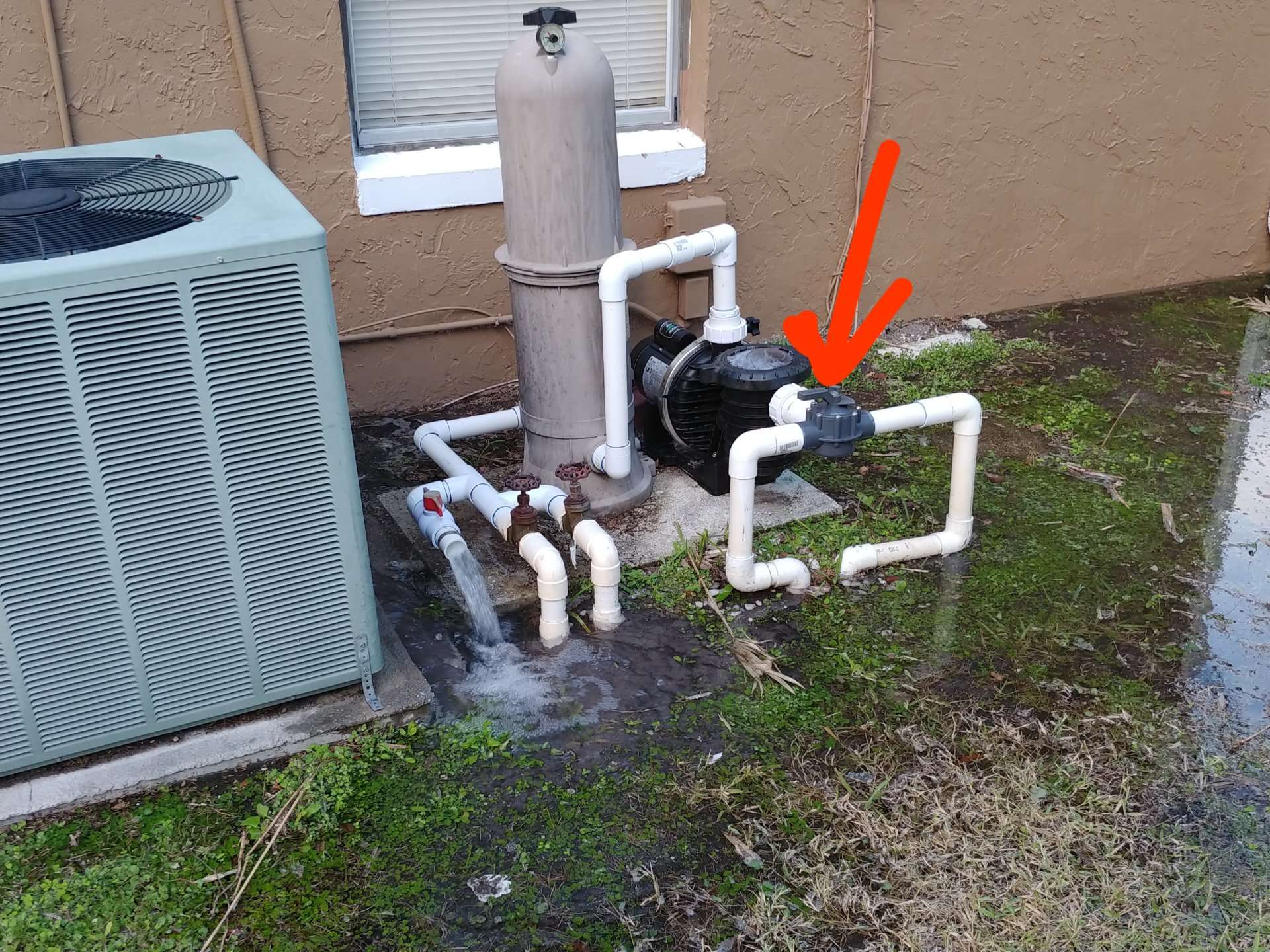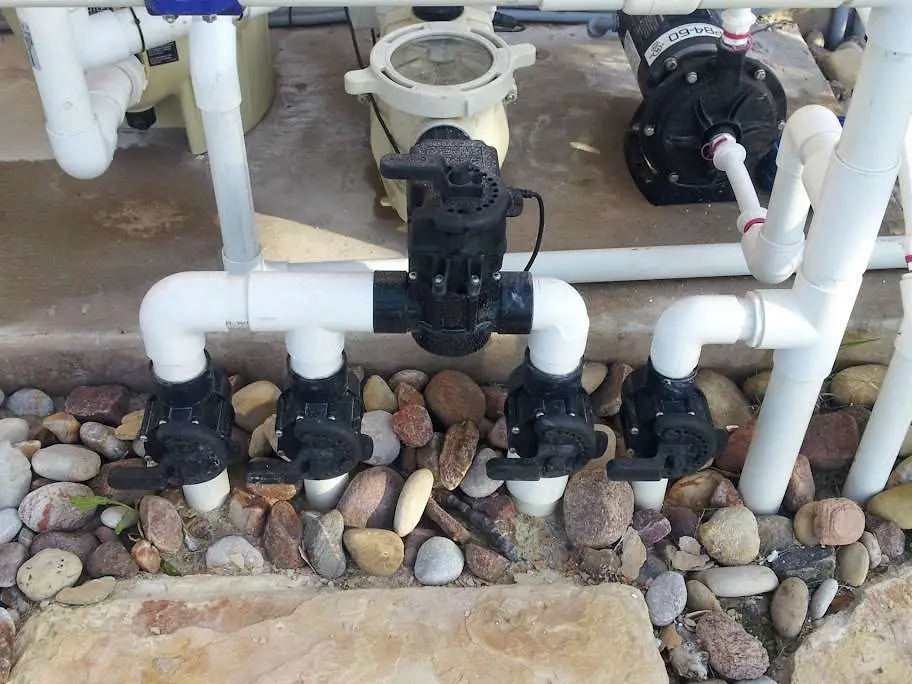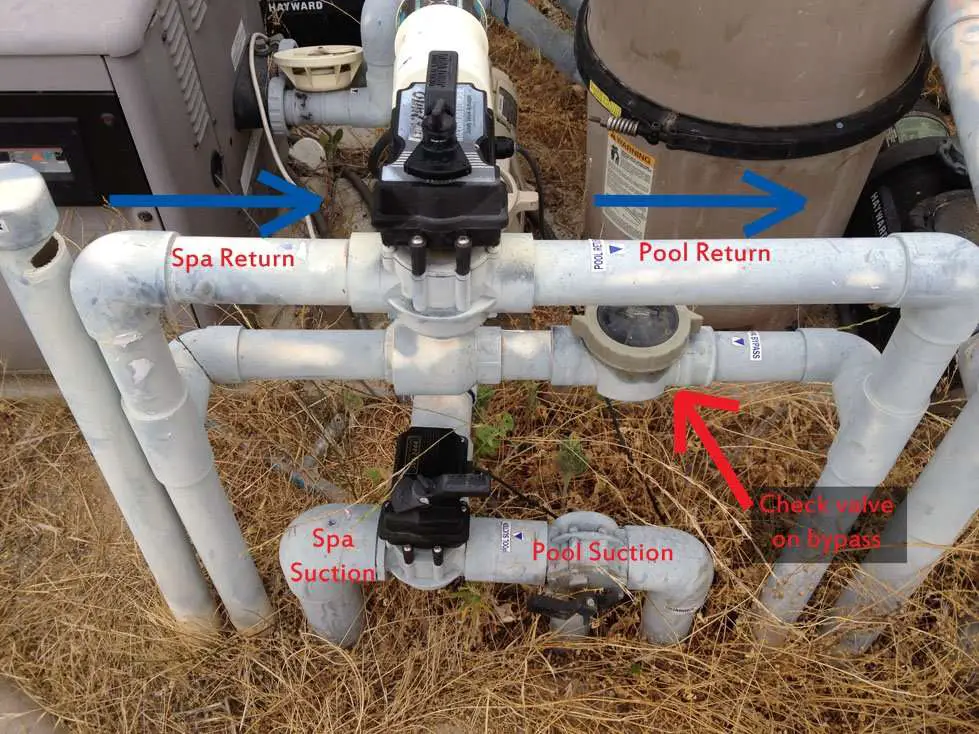How To Drain A Pool
Theres more to draining a pool than pulling a plug or starting a siphon. If you do it wrong, you could damage your pool, yard, and even your neighbors property. These tips on how to drain a pool will help.
There are several times during the life of a pool where it might need a fresh start. Whether you need to drain it because of repairs or maintenance that cant be done underwater or because the water quality has diminished beyond resolution, as pool draining is often necessary roughly every five years. And while draining a pool may seem like a simple concept, some pools like fiberglass and vinyl arent meant to be drained, so they require special consideration. There is a lot to know before you start.
Related
How to Maintain a Pool
Try Using An Electric Pool Pump
Like in a garden hose siphon, an electric pool pump also needs it to be submerged into the water. Find an area where to place the hose pump before draining the water to avoid flooding.
Then, you can turn your electric pump on and ensure that the water is decreasing. But, keep in mind that using this method wouldnt drain out all the pools water.
Thats why when the pools water level is low, you need to turn off the pump.
Why You May Need To Drain Your Pool
There are several different reasons why you have to know how to drain an Intex pool. One of the most obvious reasons is to store your pool
Intex and other vinyl pools are made to either winterize or to drain & store it away during the winter months. Draining your Intex pool can be beneficial if you live in a colder climate. Some pool warranties will void the pool is left out in climates that are colder than 41degrees Fahrenheit which is why it is so important to double-check the manual/warranty.
Storing your pool can also free up some needed space in your yard or deck.
Draining your Intex pool is also a must if you want to store your pool during the cold months. And if you dont want to go through the whole process of winterizing your pool.
We already covered the different reasons why you should drain your swimming pool, you can check that out if you want to know more information about the importance of draining your pool.
Read Also: Cya Reducer For Pool
Risks You Face When Draining Your Pool
Here are the reasons why we always recommend a pool professional to oversee draining the pool.
- Your pool can pop out of the ground – Depending on your areas water table, an empty swimming pool can be pushed out of the ground by hydrostatic pressure. Which is just basically saying that the pressure exerted by the water/ground outside of your pool exceeds the pressure from the inside of the pool, causing your pool to get pushed out of the ground.
Read This Before Draining Your Pool

As peak pool season comes to an end, you may be wondering what to do with your pool. Or maybe your water has taken a turn for the worse following some rain, or you neglected to clean it in a timely fashion. Whatever the reason, many pool owners think the logical solution is to drain the pool. This is a bad idea for a number of reasons.
Read Also: Vdara Hot Tub
How To Properly Drain Your Inground Pool
Avoid troublesome algae treatments or costly surface and equipment damage. The Sutro Water Monitor automatically tests your water 3x/day and gives you exact instructions on how to treat your water so that your pool or spa is always ready.
Learning how to drain a pool can seem daunting. We love to have our swimming pool full of crystal clear water, available to enjoy 24/7. However, as a pool owner you must face the fact that draining your pool is necessary every certain amount of time.
Fortunately, the process to drain your pool should be done every few years. But how is it done? Its not as easy as pulling a plug and not doing it properly could cause serious damage. At Sutro, your trusted Smart Water Monitor, we want to make sure you know how to properly drain an inground pool and when to do it.
Replace The Hydrostatic Plugs
Is very likely that opening the hydrostatic plugs may cause them to be damaged, so its best to be prepared and have new valves to replace them in such a case. Replace them before refilling your pool again.
Now youre ready to perform work on your pool. Whatever task you do, make sure you dont take too long, preferably no longer than one week. Once youre done, youll be set to start filling your pool.
When youre ready to open your pool again, it will be time to balance your newly renovated water for more years of pool enjoyment.
Sutro helps you keep your pool water balanced by measuring and monitoring your waters chemistry, allowing you to know the right treatment options at all times.
You May Like: Cleaning Concrete With Chlorine
How To Drain Last Bit Of Water From Pool
by Team Teserra | Dec 24, 2019 | Swimming Pool Maintenance
Every swimming pool owner knows that from time to time, draining the water from the pool is necessary. There can be a ton of reasons for this, including replacing your pool liner, or due to environmental conditions. Once the water has been drained, your pool can be exposed to potential damages. Its important to know how to drain last bit of water from pool, so you can minimize the risk of damage.
What Kind Of Pump Do I Need To Drain My Pool
Submersible Pumps If youve ever needed to drain your pool, its likely youve already encountered a submersible pump. A submersible pump, as the name implies, operates while fully submerged in water. These pumps feature a lot of horsepower, and primarily drain the water safely from swimming pools and spas.
Recommended Reading: Can Lice Drown In A Pool
Drain An Inflatable Pool Without A Pump
To drain an inflatable pool without a pump, youll either use the drain plug on the bottom of the pool, or youll need to siphon the water out with hoses. Siphoning water out of a pool with a garden hose is the most practical and common way to drain a pool without a pump.
Some inflatable pools will have a drain plug near the bottom of the pool to allow you to drain the water quickly and easily. Some drain plugs will allow you to attach the drain to a garden hose to keep the water away from your house and foundation.
Even if you have a drain plug, you may not want to drain the pool where it is if its too close to your home.
Water seeping down near the foundation of a house is one of the main causes of foundation cracks and issues in a home. If youre in that situation, I would recommend trying to drain the pool with a garden hose.
Heres a quick video showing someone using the garden hose draining method.
Never Use The Pool Pump To Drain The Pool
You mightve seen advice here and there on the internet saying that to drain your pool, all you need to do is put your filter in backwash or waste mode, and use the pump to pull water out of the pool.
We do not recommend this method.
Your pump is connected to the pools skimmer. This is where water enters the filtration system, which is powered by the pump. And pool pump motors are water-cooled devices.
If you use the pump to pull water from the pool, as soon as the water level falls below the skimmer, your pump will start pulling in air. Without water to keep it cool while it runs, it will eventually overheat, and possibly break beyond repair, which means youll have to buy a new pool pump.
There are ways to avoid this, but frankly, the process is more complicated than it needs to be. When it comes to expensive pool equipment, we like to err on the side of caution and use simpler, safer methods.
Read Also: Aria Hotel Pool
Draining Pool Water Using An Electric Pool Pump
To drain your pool water using an electric pool pump, follow the steps below:
Know Where Youre Going To Drain

Before you start draining your pool, you absolutely need to have a game plan. Remember, this is thousands of gallons of water youre about to moveand its got to go somewhere. Plus, your yard is not an option, and not just because you dont want chemically-treated water going into your grass. Pool pop ups happen most frequently when there is pressure underground around your pool. Introduce water to the ground near your pool and youre probably going to regret it.
So where should all that water go? Again, this is a time when you should consult with your local water authority. The usual process is to direct the water into one of your homes sewer cleanouts, but some cities allow you to drain into the streetand others have tight restrictions on when you can drain your pool. Go to your local dot gov to find out the regulations that apply for you.
To take extra measures to avoid the pool pop up, make sure your drainage hose is long enough to reach the sewer cleanout . And just in case any other drainage problems occur, direct the drainage hose downhill from the pool. You never quite know if your sewer cleanout is significantly clogged until youre trying to push thousands of gallons of water through. If something goes wrong and that water happens to come back toward you, you want to make sure its nowhere near your pool.
Also Check: Swimex Prices
Its Going To Be Expensive
In the United States, one person uses approximately 80 to 100 gallons of water per day. A large pool can hold 18,000 to 20,000 gallons of water. The month you choose to drain and refill your pool, expect a hefty water bill.
You can be better prepared for it by knowing how many gallons of water youre going to need to fill your pool. To know this, you need to know your pool volume. You can easily figure this out with a pool calculator.
What Happens If My Pool Overflows
Most of the time, when your pool overflows, it’s a big headache, but nothing that cant be remedied.
Youll just need to wait for your yard to absorb the excess, drain off some pool water, and balance your pool chemicals.
That’s the best case scenario.
The worst case scenario happens when there has been major overflow and you have poor drainage in your yard.
In that case, you may have landscape and structure damage, contaminated water, and various other concerns that come with a flooded yard.
Don’t Miss: Hiding A Pool Pump
Reasons To Drain Your Pool
A well-maintained swimming pool rarely needs to be drained of its water. Whether you initially filled the pool with treated municipal water or from a water truck, that water came at a high cost. So, a better option than draining your pool is to zealously protect your pool’s water quality and the physical condition of the swimming pool itself. Still, there are a few reasons why you may need to drain the pool:
- Pool Water Quality: When total dissolved solids reach 2,000 ppm or higher, it can be difficult to correct the water quality. Excessively high cyanuric acid levels, too, may warrant pool water drainage. With either TDS or CyA, you reach a tipping point where the addition of more chemicals cannot correct the water quality.
- Pool Maintenance: When the inner surface of the pool needs to be resurfaced, cracks repaired, or painted, you have no other option than to remove the water from the pool and let it completely dry before the repairs.
- Long-Term Pool Closure: Swimming pools should remain full of water through all seasons. But sometimes, pool dormancy extends so long that it makes more sense to drain the pool than to keep it maintained.
Dont Drain In The Rain
A period of heavy rainfall is the absolute worst time to drain your pool. The ground will be heavy with water, which increases the risk of it pushing the pool up and out as you empty it.
Wait for dry weather. And not just a day or two of it. Give the ground time to dry out after its absorbed a lot of rain. Remember, just because the ground looks dry on the surface doesnt mean its not still saturated several feet down around the sides and bottom of your pool.
Don’t Miss: Aria Las Vegas Pools
What Not To Do
Do not allow the saltwater from your pool to flood your lawn or collect in one area of your lawn. While small amounts of salt will not typically affect grass, large amounts of salt from your entire pool can cause salt to build up in areas of your lawn where the water evaporates, leaching moisture and nutrients from the soil that would otherwise be used by your grass and other plants.
Depending on your local bylaws and guidelines, you may not be allowed to drain your saltwater pool into gutters and storm drains on nearby roads as this can disrupt the process at your local water management facilities, along with harming local wildlife and plant life.
The Verdict How Should You Drain Your Saltwater Pool
Try to avoid flooding your lawn with saltwater from your pool as the salt can remain in the soil and on top of your lawn as the water evaporates, potentially damaging your lawn and nearby plants. It is best to drain your pool in stages, onto your lawn only if you have a water irrigation system to disperse it, or by using a submersible pump to move the water from your pool into one of your homes sanitary water drains.
Don’t Miss: Do Pool Filters Run All The Time
Should A Winter Pool Cover Touch Water
Your pool water level should not be too low, as the water must support the cover in situations where you receive a heavy snowfall. At the same time, ideally you dont want the water to touch the underside of the cover under general conditions as that contact will create a wet spot where debris will accumulate.
Use Your Pump Drain Spigot

If your pump has a drainage spigot, this will be even easier than siphoning the water.
Simply connect a garden hose to the spigot, take the other end of the hose to the drain, open up the spigot and the pump should do the work.
Its a good idea to have one person at the spigot and one at the drain during this process so that someone knows when to turn off the spigot so as not to drain too much water.
Read Also: Pristine Blue Pool Chemicals Reviews
Dont Drain Any Pool Water Into Your Neighbors Yard
While this may seem obvious, it is best to avoid draining your pool water near or into your neighbors yard. The sudden abundance of water in their yard can cause damage to their lawn, their plants, and structural damage to their homes if the water drains or pools near their home.
Draining pool water into your neighbors yard might not seem like a big deal but it can be a nuisance for them if they did not consent to it and could leave you facing legal notices and fines should they partner with a real estate attorney over damages caused by your pool water.
How To Drain An Intex Pool: Easy Set Or Pools With Inflatable Top Ring
Knowing how to drain your Intex kiddie pool or Easy set pool is an important process in maintaining and cleaning it.
For Intex kiddie pools with inflatable top rings or the Easy Set pools, they often dont have a drain valve to drain the pool water, so youll have to do it using a garden hose or a submersible pump.
For this guide, we will use a simple garden hose.
Step-by-Step Guide In Draining An Intex Easy Set Pool
Total Time:4 hours
Recommended Reading: Swimming Pool Paint Lowes
Wait For The Right Weather
You might think a bright, sunny day is the perfect time to drain your pool. And it isas long as its not too hot out.
Pools are meant to be full of water. When theyre drained, and the liner is dry and exposed to high heat, its vulnerable and can easily be damaged by the sun. An inground pool can even blister and crack if left dry in high temperatures.
To avoid this, drain your pool when the outside temperature is 85°F or lower. If your pool needs to be drained, but youre into the middle of summer when temperatures are going to remain high , wait until autumn or even winter if that season is mild enough where you live.